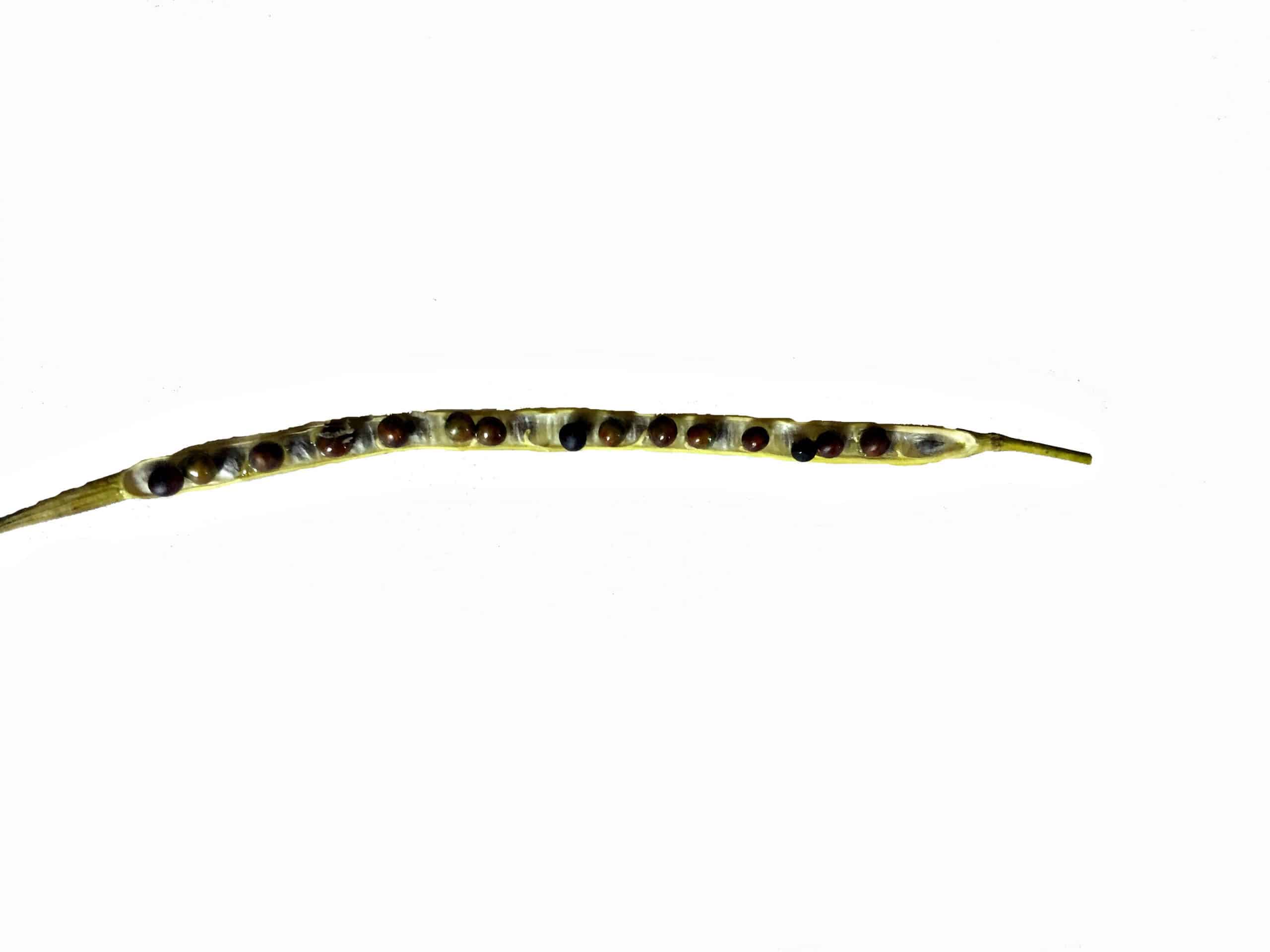The ideal harvest aid options will vary depending on your field conditions, harvest plan and weather forecast. Check through these options to see which scenario sounds like yours and which products may be best suited for you.
Glyphosate
Glyphosate is registered for pre-harvest perennial weed control in canola. Ideally, glyphosate should be applied at the same time as swath timing (60% seed colour change), but it is registered for use when the seed moisture is less than 30%, which corresponds to about 30% seed colour change. Applications made before the 30% moisture stage increase the risk of excessive glyphosate residue in the seed. Canola is very efficient at moving glyphosate or other systemic compounds into the seed prior to physiological maturity. Excessive pesticide residues in the seed can result in export problems.
Some growers who straight combine canola that is not a glyphosate-tolerant variety will apply glyphosate to even out the crop for easier harvest.
The rate of drydown with preharvest glyphosate is heavily dependent on environmental conditions, so weed control should still be the main goal. Glyphosate will not often significantly hasten crop maturity
Heat LQ
Heat LQ (Group 14 saflufenacil) fits with any canola herbicide system, including glyphosate-tolerant varieties. The crop is usually ready 7 to 21 days after application, but it could be longer in cool, cloudy and rainy conditions.
Application timing is 75% seed colour change. The pre-harvest interval is three days.at LQ is often tank mixed with glyphosate for more rapid dry down of crop and weeds. Merge is required with the tank mix. Use a minimum water volume of 40 L/ac (10 gal/ac). BASF recommends 5 gal/ac for aerial applications. Heat LQ can be applied alone, and in this case should be treated more like a desiccant with double the water volume and double the volume of Merge.
A tip for Heat LQ use: Heat is activated by sunlight, so application on a sunny day maximizes its performance.
Reglone and other diquat brands
If the goal is desiccation and not weed control, Reglone (diquat) is a contact herbicide registered in canola to dry immature green material to facilitate harvest. Reglone does not hasten crop maturity. It shuts the plant down quickly and basically STOPS it from maturing, which can lock in high green seed levels if applied prematurely. Green seeds at the time of application will stay green.
Apply at 90+% brown seed. This means the entire plant has 90% or more of its seed totally brown in colour. This is unlike a seed colour change rating, which refers to the main stem only and includes anything with any degree of colour change. All plants should be at this stage, so diquat is best for uniform fields. If unsure about crop uniformity, wait a couple extra days before spraying.
The label indicates that it should be only applied to Brassica napus (Argentine) canola to facilitate dry down of lodged canola crops. Efficacy will be maximized with the highest water volumes feasible (minimum 91 up to 222 L per acre ground or 18 L per acre aerial) and with application at the full rate, on sunny days (sun activates diquat) and at a slow pace with the boom 20″ above the canopy.
If applying glyphosate and diquat, do not tank mix. Apply glyphosate first then follow with diquat 5 to 7 days later.
Combine as soon as the crop dries down. Reglone can significantly increase both pod shatter and pod drop if harvesting is delayed, so be prepared to combine as soon green seed and seed moisture have reached suitable levels. The Reglone label says to combine no later than 14 days after application, but it is likely that the crop will reach acceptable moisture levels for harvesting within 4-7 days.
A tip for Reglone use: Reglone is activated immediately in daylight, which is why “sunny days” are recommended. However, an application in the evening will allow the herbicide to spread slightly from the droplet contact point. That would improve coverage for when sun activates the herbicide the next morning, resulting in more complete uptake by plant tissues.

